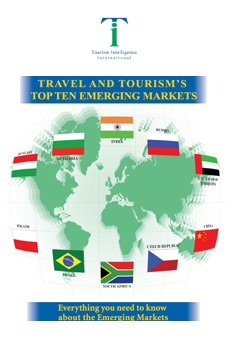This article argues that we need to move
our focus away Aid and Charity to more Participation and Integration –
integration of more people and businesses from less developing economies in the
PROCESS of wealth creations. We need to
change current practices of making money based on exclusion, contradictions and
inefficiencies, and then thinking about charity when distributing the spoils.
His Royal Highness the Prince of Wales in a
Sky News interview on November 23,
2015 posited that there is a relationship between climate change and terrorism – the logic: severe floods in Syria driving many Syrians into urban areas,
fuelling unemployment, hopelessness and ultimately, terrorism. Prince Charles’ linkage between climate
change, poverty and terrorism was quickly shot down. Observers such as conversation.com argue that while climate change is important, the current
crisis has to be seen in the context of centuries of wars and conflict, often
involving vested political and economic interests of the West. Nevertheless, the Prince’s statement has
started a conversation about the true causes of poverty, war, climate change
and terrorism. And while no one claims
to have the total answer, contributing factors, such as climate change/environmental
destruction also need to be placed on any agenda for development and change.
Pope Francis on his visit to Africa on November 26th added
his voice to the environmental cause, appealing for more progress to be made on
sustainability and the need to avoid violence in the name of religion. This appeal comes ahead of the November 30th
two-week COP 21 Environmental Negotiations in Paris – a city that is still
reeling from the November 13th Terrorist Attacks by Islamic State militants that
has left 130 people dead and the entire country in shock, disbelief and terror.
At the Business Forum of Commonwealth Heads of Government Conference (CHOGM)
in Malta 24-26 November, 2015, the Prime Minister of the Bahamas, the Hon Perry
Christie drew the link between youth unemployment, hopelessness, and the growth
of the culture of drug and terrorism. He
emphasized his own government’s commitment to the youth education and
employment. The Bahamian Prime Minister suggested
that addressing core issues of unemployment and hopelessness among youth, as
well as creating dignified employment, are a key strategies for combating drugs,
crime and terrorism in the Caribbean, and globally.
The links between poverty, youth unemployment, hopelessness, environmental
degradation, climate change, and increasingly terrorism, will continue to occupy
the hearts and minds of businesses, policy makers and civil society for decades
to come. This is especially the case, as
solutions to these unending problems appear to be elusive at best, but also growing
in volume and complexity.
It is key is to understand the complex causes of the problems, build
consensus and carrying out combined actions to solve them.
While there are numerous initiatives and actions on many fronts to
address issues of poverty, climate change and terrorism, the question really
is: are we aiming at the correct targets; and do we have enough ammunition to
go the full round (forgive the puns).
Many actions to “help” are aimed at the poorest poor (granted that this
makes us all feel better) and many support are “final solutions” (water
delivered to poor; fish or food given to people). But are we really teaching people to fish so
that they can feed themselves, by themselves, for themselves?; are we really
providing sustainable solutions? (or are we planning to donate fish, food and
water to the poor forever?).
It is critical that we “re-think” the current model of development (to
use Pope Francis’ words). And we must
lead by example.
The Prime Minister of the small twin-island republic of Trinidad and
Tobago, the Hon. Keith Rowley set an important example at the Business Forum of
Commonwealth Heads of Government Conference (CHOGM) in Malta 24-26 November,
2015. Prime Minister Rowley indicated that Trinidad and Tobago will continue to
support to African states, such as Rwanda and Ghana and Nigeria, to build their
energy capability and contribute to their energy security. Trinidad and Tobago’s capability to support
African States is based on more than five decades of experience in developing
the islands’ abundant oil and natural gas resources.
It is through this direct technical support to build production
capacities locally that true sustainable development will take place. It is only when sustainable, competitive and
profitable production capacities are built locally, that the unwelcome flows of
immigration and perhaps terrorism, will be stemmed.
Considerably more effort is required to build productive capacities at
source, in developing economies. This
can be achieved through partnerships, strategic alliances, a different form of
Aid and Corporate Social Responsibility (CSR) and businesses have to play a key
role in this process.
At the Commonwealth Heads of Government Conference (CHOGM) in Malta 24-26
November, 2015, Sir Sherard Cowper-Coles, adviser to the Chairman of the global
bank, HSBC UK, clearly indicated that companies have to move beyond CRS; beyond
the green economy and that saving planet earth has to become part of the DNA of
the global financial sector.
It is through interventions at the back end of development process (building
sustainable, competitive and profitable production and management capacities
locally) and throughout the entire value chain, rather than at the front/final
end (delivery of final solutions/aid, such as food and water), that true
progress will be made.
Partnerships are key to this process and the business sector is key. In this regard, there are many other
Commonwealth States that have built capacities and world-class sectors –
Singapore’s IT and Smart City/Country Initiatives; London’s Financial Services
Sector; South Africa’s Game Parks and Strong Conservation Heritage; and many
others. It is critical that other
CommonWEALTH countries take the example that Trinidad and Tobago has set, to
support and pull up other nations and sectors where they have competencies.
On the receiving end, it is critical that the public and private sectors
of lesser developed Commonwealth states build their capabilities and build competent
and corruption-free institutions that could best leverage and direct national,
regional and global private sector support.
Initiatives to develop the Blue Economy, to collaborate regionally and
and to drive development such as that taken by the islands of Grenada and the
Seychelles needs to be supported. Indeed
the Blue Bond, the financial instrument developed by the Seychelles Government
to drive grow and support its environment initiative and industry requires
support from the international financial sector. Developing states within the Commonwealth
cannot continue to sit and wait for AID resources to trickle down to them, but
must actively participate in designing, developing and influencing the
direction of those flows. In addition,
it is key to ensure that the flow of funds and other resources actually reach
the target beneficiaries and achieve the maximum impact. In this way, the
Millennium Development Goals and the seventeen Global Goals can be truly
achieved.
Major private sector institutions, such as HSBC, need to focus their
sustainability efforts on building and supporting productive capacities locally
(and not just helping the poorest poor because it is easier and makes us feel
good). A great start can be actively investing
in the Seychelles Blue Bond and assisting with its management and sustainabilty. It is therefore important to channel private
sector CSR efforts on partnering and building productive capacities locally and
not just on giving generic Aid.
It is also critically important to build capabilities, competent and
corruption-free institutions that could best leverage and direct national,
regional and global private sector support.
Skilling the commonwealth continues to be a priority.
Ahead of Paris COP 21, it is therefore important
not only to agree on the targets, but importantly, the mechanisms, instruments
and measures requires to achieve them, and perhaps even more important, the
people, organisations and institutions that will ultimately deliver these
target.
In addition, we have to move our focus away
Aid and Charity and achieve more Participation and Integration – integrating
more people and economies in the PROCESS of wealth creations. We need to move
away from the current practices of making money based on exclusion, contradictions
and inefficiencies, and then thinking about charity when distributing the
spoils.
The 53-strong CommonWEALTH nations with a combined population of 2.2
billion, comprising one-third of humanity with a projected trade of US$2.75
trillion by 2030, is well placed to drive this development.
Dr. Auliana Poon, Tourism Intelligence
International, Trinidad and Tobago,
November 28, 2015.





